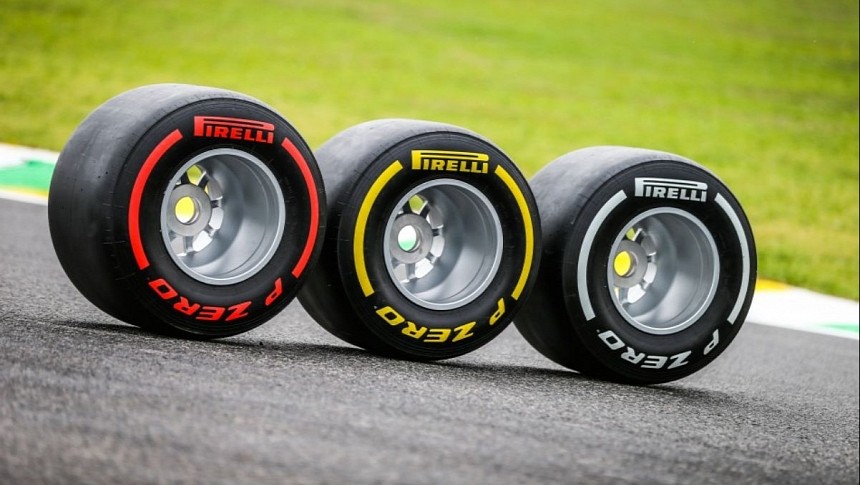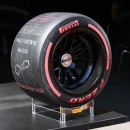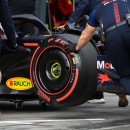Fans who've been following the goings-on of Formula 1 know about the long-standing debate about tire warmers. Following a reduction in allowed temperature from 100 to 70 degrees Celsius, the sport plans to ban them altogether, with a vote scheduled after the British Grand Prix at Silverstone. But recently, Pirelli brought a new variable into the discussion, with undercuts hailed as a potential issue.
In case you don't know what an undercut is, it essentially means opting for an early pit stop to take advantage of the performance gains of fresh rubber. This is usually a potent strategy as the few seconds a driver will make up before his rival also pits for new rubber can elevate his position on the track. And that's an advantage because modern cars and some circuits aren't exactly excellent at on-track battles and overtakes, in turn making track position a priority.
Choosing the ideal pit window, taking advantage of safety cars, and ensuring the driver is always on the correct choice of rubber compound are all part of the race strategy devised by teams. And race strategy is crucial to winning in Formula 1, as showcased by many racing outfits, with Ferrari being a great example of just how much a team stands to lose when making the wrong choices.
This leads us to the problem that the ban on tire warmers can cause to race strategies. Without any heat in them, the tires perform poorly for about one or two laps, mitigating the advantage going for an undercut can offer a team. Banning tire warmers could force teams to adopt strategies focused on tire management and going for one-stop races, which could hurt the overall spectacle of a Grand Prix weekend.
On top of this issue, many drivers have raised safety concerns, as going out on track on cold rubber could lead to dangerous and costly accidents. As a result, Pirelli is working hard to deliver a tire that could mitigate some of the problems, although not all, as it's physically impossible for a cold tire to perform as well as one that's been preheated.
The official provider of Formula 1's tires also mentioned the possibility of more extensive simulations together with F1's technical side. The aim of these rigorous tests is to determine key performance indicators of the tires, like the warm-up, degradation, and peak level of grip. Gathering more data and doing race simulations could prove crucial in designing a tire that won't diminish the importance of race strategies.
Granted, the main concern is still the safety of the drivers, and if the vote goes through for the ban on tire warmers, that will be the primary focus. But the decision has not yet been made, and considering the impact this change could have on racing and other factors is essential. Hopefully, whatever happens, the sport won't be forced to sacrifice the levels of on-track entertainment.
Choosing the ideal pit window, taking advantage of safety cars, and ensuring the driver is always on the correct choice of rubber compound are all part of the race strategy devised by teams. And race strategy is crucial to winning in Formula 1, as showcased by many racing outfits, with Ferrari being a great example of just how much a team stands to lose when making the wrong choices.
This leads us to the problem that the ban on tire warmers can cause to race strategies. Without any heat in them, the tires perform poorly for about one or two laps, mitigating the advantage going for an undercut can offer a team. Banning tire warmers could force teams to adopt strategies focused on tire management and going for one-stop races, which could hurt the overall spectacle of a Grand Prix weekend.
On top of this issue, many drivers have raised safety concerns, as going out on track on cold rubber could lead to dangerous and costly accidents. As a result, Pirelli is working hard to deliver a tire that could mitigate some of the problems, although not all, as it's physically impossible for a cold tire to perform as well as one that's been preheated.
The official provider of Formula 1's tires also mentioned the possibility of more extensive simulations together with F1's technical side. The aim of these rigorous tests is to determine key performance indicators of the tires, like the warm-up, degradation, and peak level of grip. Gathering more data and doing race simulations could prove crucial in designing a tire that won't diminish the importance of race strategies.
Granted, the main concern is still the safety of the drivers, and if the vote goes through for the ban on tire warmers, that will be the primary focus. But the decision has not yet been made, and considering the impact this change could have on racing and other factors is essential. Hopefully, whatever happens, the sport won't be forced to sacrifice the levels of on-track entertainment.














